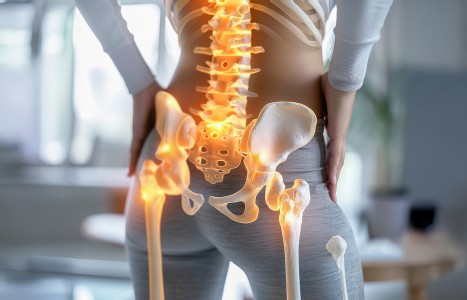Being proactive vs. reactive with tax planning will have a tremendous impact on profitability and long-term wealth creation. Keep in mind, I am not a CPA and I am not giving tax advice. Rather, I’m passing on information that I learned as a practice owner and now implement in my financial planning practice. While not an exhaustive list, here are a few items to contemplate in 2025 as you watch the dollars in your practice.
Staying Silent About CAM Use
Research continues to show that complementary and alternative medicine (CAM) use, particularly by older adults, is on the rise. More people are using it, but how many discuss CAM use with their physician(s)? A recent report from the American Association of Retired Persons (now known only as the AARP) and the National Center for Complementary and Alternative Medicine examines patterns of CAM use among Americans ages 50 and older. The report provides insight into the types of CAM older adults are using, how they get their information on CAM, and whether they disclose such use to their physicians.
Interviews were conducted by telephone with 1,559 people ages 50 and older. Questions covered eight basic subject areas relative to CAM use:
- whether respondents had ever used various types of CAM, and for what they had used it;
- what types of physicians they visit;
- whether they had discussed CAM with their physician(s);
- what they discussed or why they hadn't discussed it;
- who initiated the discussion;
- overall level of comfort in discussing CAM with their physician;
- current use of prescription and over-the-counter medications; and
- primary source of information about CAM.
Of the various CAM therapies, respondents were most likely to have used chiropractic, massage, manipulation or other forms of bodywork (45%). Furthermore, those who did use CAM therapies were most likely to use them in order to treat a specific health condition (66%) or for overall wellness (65%). Respondents were less likely to use CAM in order to supplement conventional medicine (45%) or to prevent illness (42%).
In terms of discussions about CAM use, only about one-third (31%) of those who utilized CAM had actually discussed such use with their physician, and overall, only about one in five respondents (22%) had discussed their CAM use. The biggest reason given for lack of CAM discussions was that the doctor never asked (42%), followed by a lack of understanding (on the part of the patient) that their physician should be informed (30%). Other reasons given included a lack of time during the office visit (19%); a belief that the doctor did not know about the topic (17%); or the perception that the doctor would be dismissive of the value of CAM therapies (12%).
When CAM was discussed with a physician, more than half of the respondents (56%) said they had initiated the discussion, as opposed to their doctor broaching the subject (26%). When the topic was discussed, a variety of subjects were covered, including:
- the effectiveness of a CAM therapy (67%);
- what to use (64%);
- how a CAM therapy might interact with other medications or treatments (60%);
- advice on whether or not to pursue a CAM therapy (60%); and
- safety of a particular CAM therapy (57%).
Interestingly, where to go for information about CAM (27%) and referrals to CAM practitioners (24%) were the least-discussed topics, which raises the obvious question: If patients are not getting information about CAM from their doctors, where are they getting their information? According to the study, most information about CAM therapy comes from family and friends (22%), which was almost twice as high as physicians serving as the primary source of information (12%).
One bit of information from the study that was not a surprise, unfortunately, was the use of conventional and over-the-counter medications by people age 50 and older. Almost three-fourths of respondents (74%) were currently taking one or more prescription medications, with the majority of those taking two to three medications (23%). As one might expect, the oldest age group (ages 65 and older) was the most likely to be taking prescription medication (84%). Numerous other studies have reached the same troubling conclusions regarding medication overuse in the elderly.
The story was very similar for over-the-counter (OTC) medications. Fifty-nine percent of respondents reported using one or more OTC medications. What is particularly worrisome is that 75 percent of respondents who were currently taking one or more prescription medications also reported taking one or more OTC medications. Furthermore, 75 percent of respondents who were taking dietary or herbal supplements also were taking one or more prescription medications.
Ultimately, as the researchers concluded, better communication between physicians and their older patients is paramount, particularly as more people utilize CAM and as research reports on its benefits. They noted:
"Thus, the common use of CAM as a complement to conventional medicine - and the high use of multiple prescription drugs - further underscores the need for physicians and patients to have an open dialogue to ensure safe and appropriate integrated medical care. Patients need to mention CAM use to their physicians and physicians need to ask about it - especially given that less than half of respondents who said they had not discussed CAM with their physicians would be comfortable doing so. The lack of this dialogue points to a need to educate both consumers and health care providers about the importance of discussing the use of CAM; how to begin that dialogue; and the implications of not doing so."
Resource
- Complementary and Alternative Medicine: What People 50 and Older Are Using and Discussing With Their Physicians. Available at: http://assets.aarp.org/rgcenter/health/cam_2007.pdf.


